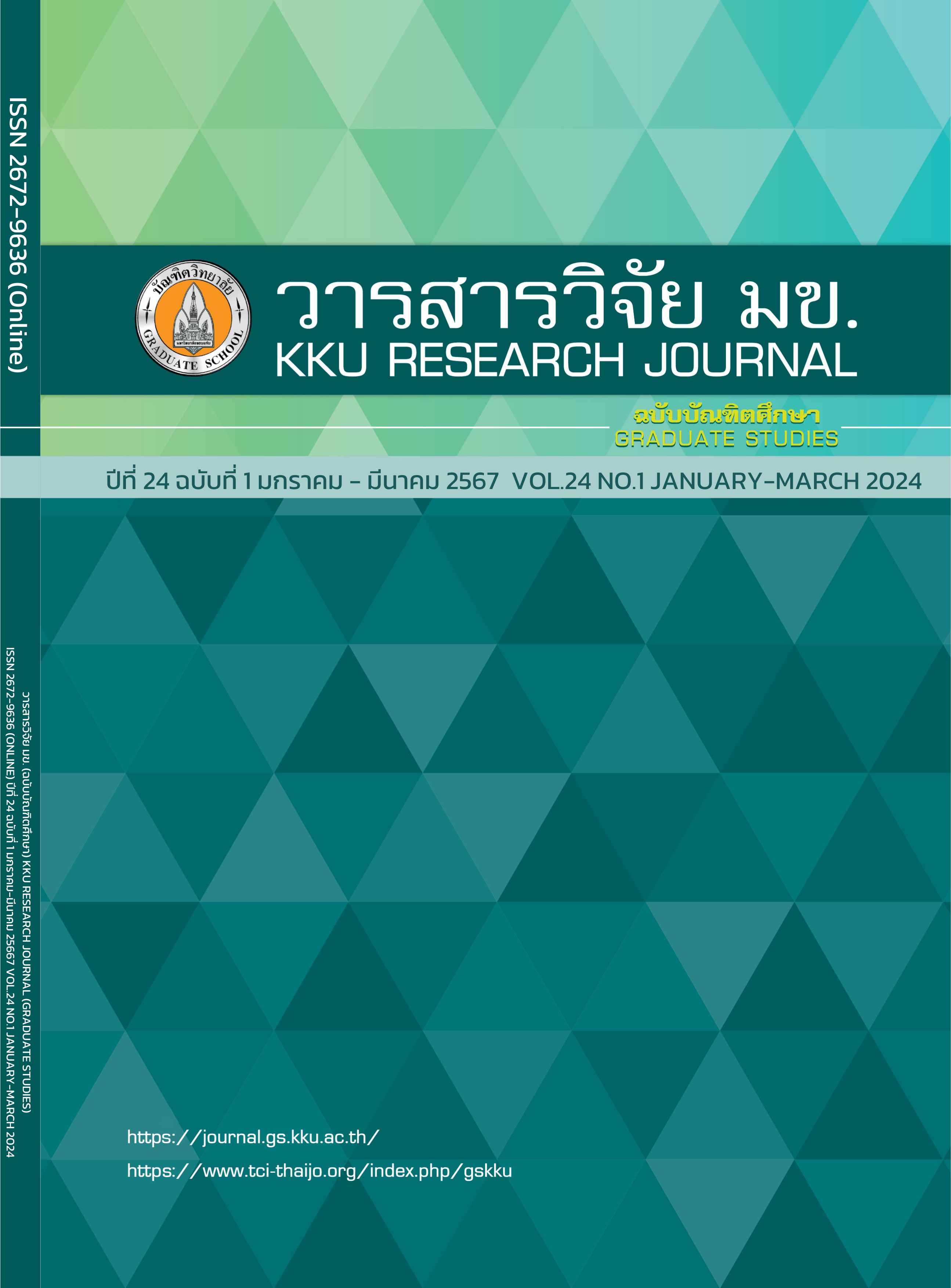Urea Transformation in Clayey Soil Affected by using Synthetic and Natural Inhibitors under Laboratory Soil Incubation
Keywords:
Urease inhibitors, Nitrification inhibitors, Soil incubationAbstract
This study investigates the effect of urea with commonly applied rate by farmers and soil analysis rate and using synthetic and natural inhibitors associated with urea based on soil analysis rate on soil N transformation in form of ammonium and nitrate under laboratory soil incubation for 42 days. Seven inhibitors used in this study were (1) NBPT (N-(n-butyl) thiophosphoric triamide), (2) DMPP (dimethylpyrazole phosphate), (3) NBPT+DMPP, (4) garlic (Allium sativum), (5) ground neem seed (Azadirachta indica), (6) garlic+ground neem seed and (7) praxelis (Praxelis clematidea (Griseb.) R.M. King & H. Rob). The result showed that the application of N fertilizer at commonly applied by farmer rate had a greater soil inorganic N than soil analysis rate, but was not in proportion to the N rate applied. Moreover, NBPT, DMPP and praxelis tended to retain an accumulative ammonium by 15.49, 14.74 and 14.67% higher than only urea, respectively. All inhibitors had a potential for retarded nitrification rate up to 3 weeks by praxelis achieved 24.09% of inhibition of nitrification.
References
Dheri GS, Lal R, Verma S. Effects of nitrogen fertilizers on soil air concentration of N2O and corn growth in a greenhouse study. J Crop Improv. 2015; 29(1): 95-105.
Chen D, Suter H, Islam A, Edis R, Freney JR, Walker CN. Prospects of improving efficiency of fertiliser nitrogen in Australian agriculture: a review of enhanced efficiency fertilisers. Soil Res. 2008; 46(4): 289-301.
Byrne MP, Tobin JT, Forrestal PJ, Danaher M, Nkwonta CG, Richards K, et al. Urease and nitrification Inhibitors—as mitigation tools for greenhouse gas emissions in sustainable dairy systems: a review. Sustainability. 2020; 12(15): 1-35.
Di HJ, Cameron KC. Inhibition of nitrification to mitigate nitrate leaching and nitrous oxide emissions in grazed grassland: a review. J Soils Sediments. 2016; 16(5): 1401-1420.
Arora K, Srivastava A. Nitrogen losses due to nitrification: plant based remedial prospects. Int J Bioassays. 2013; 2: 984-991.
Amtul Z, Rahman AU, Siddiqui RA, Choudhary MI. Chemistry and mechanism of urease inhibition. Curr Med Chem. 2002; 9(14): 1323-1348.
Zaborska W, Krajewska B, Leszko M, Olech Z. Inhibition of urease by Ni2+ ions: Analysis of reaction progress curves. J Mol Catal B Enzym. 2001; 13(4): 103-108.
Subbarao GV, Nakahara K, Ishikawa T, Ono H, Yoshida M, Yoshihashi T, et al. Biological nitrification inhibition (BNI) activity in sorghum and its characterization. Plant and Soil. 2013; 366(1-2): 243-259.
Patra DD, Anwar M, Chand S, Kiran U, Rajput DK, Kumar S. Nimin and Mentha spicata oil as nitrification inhibitors for optimum yield of Japanese mint. Commun Soil Sci Plant Anal. 2007; 33(3-4): 451-460.
Kiran U, Patra DD. Medicinal and aromatic plant materials as nitrification inhibitors for augmenting yield and nitrogen uptake of Japanese mint (Mentha arvensis L. Var. Piperascens). Bioresour Technol. 2003; 86(3): 267-276.
Borlinghaus J, Albrecht F, Gruhlke MC, Nwachukwu ID, Slusarenko AJ. Allicin: chemistry and biological properties. Mol. 2014; 19(8): 12591-12618.
Upadhyay RK, Patra DD, Tewari SK. Natural nitrification inhibitors for higher nitrogen use efficiency, crop yield, and for curtailing global warming. J Trop Agric. 2011; 49: 19-24.
Yang JN, Zhou XQ, Nong XH, Cao J, Hui Y, Wen M, et al. Phytochemical investigation of the flowers of Praxelis clematidea (Griseb.) R.M. King & H. Rob. Nat Prod Res. 2020; 35: 3504–3508.
Sahrawat KL. Comparison of Karanjin with other nitrification inhibitors for retardation of nitrification of urea N in soil. Plant Soil. 1981; 59(3): 495-498.
Sadhukhan R, Jatav HS, Sen S, Sharma LD, Rajput VD, Thangjam R, et al. Biological nitrification inhibition for sustainable crop production. Plant Perspectives to Global Climate Changes2022. p. 135-150.
Bundy LG, Bremner JM. Inhibition of nitrification in soils. Soil Sci Soc Am J. 1973; 37(3): 396-398.
Junejo N, Khanif MY, Hanfi M, Yunus WW, Dharejo KA. Role of inhibitors and biodegradable material in mitigation of nitrogen losses from fertilized lands. Afr J Biotechnology. 2011; 10: 3504-3514.
Cantarella H, Otto R, Soares JR, Silva AGB. Agronomic efficiency of NBPT as a urease inhibitor: a review. J Adv Res. 2018; 13: 19-27.
Corrochano-Monsalve M, Gonzalez-Murua C, Bozal-Leorri A, Lezama L, Artetxe B. Mechanism of action of nitrification inhibitors based on dimethylpyrazole: a matter of chelation. Sci Total Environ. 2021; 752: 141885.
Kongkathip N, Sombutsiri K, editors. Factors of Azadirachtin Decomposition in Thai Neem Seed Extract. Proceedings of the 34th Kasetsart University Annual Conference: Science, Engineering, Agro-Industry, Home Economics, Resource and Environment Management, Education, Social Science, Economics and Business Administration; 1996 Jan 30 - Feb 1; Bangkok. Bangkok 1996. Thai.
Ruser R, Schulz R. The effect of nitrification inhibitors on the nitrous oxide (N2O) release from agricultural soils-a review. J Plant Nutr Soil Sci. 2015; 178(2): 171-188.
Soana E, Vincenzi F, Colombani N, Mastrocicco M, Fano EA, Castaldelli G. Soil denitrification, the missing piece in the puzzle of nitrogen budget in lowland agricultural basins. Ecosyst. 2021; 25(3): 633-647.
Downloads
Published
Issue
Section
License
Copyright (c) 2024 KKU Research Journal (Graduate Studies)

This work is licensed under a Creative Commons Attribution-NonCommercial-NoDerivatives 4.0 International License.



